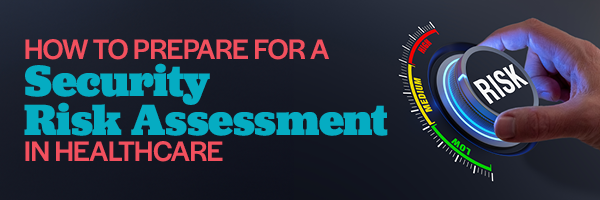
More than just a mandatory HIPAA requirement, Security Risk Assessments are critical to ensuring the security of your healthcare organization. As cyber threats evolve, so must our strategies to safeguard electronic Protected Health Information (ePHI).
In this blog, we’ll navigate through the steps involved in a comprehensive risk assessment, empowering covered entities and business associates to better understand Security Rule regulations and put them into action.
1. Prepare for the Assessment
Before embarking on a risk assessment, be sure to define the following:
- Scope: the specific areas under evaluation, or more simply put, anywhere that PHI is created, received, maintained, processed, and transmitted. It encompasses facilities, individuals, systems, and equipment where Protected Health Information (PHI) is involved. The scope acts as a boundary, clearly outlining what components are included in the assessment, streamlining the audit process.
- PHI: involves identifying its origin (e.g., information received via phone in a telehealth organization), its storage location (e.g., an Electronic Medical Record or EMR system), and the processes involved in its handling and transmission. This knowledge is pivotal for a thorough assessment of security risks.
- Asset Inventory: both physical assets such as laptops, phones, and servers, as well as non-physical assets like cloud-based Electronic Medical Records (EMR). This inventory is crucial for evaluating and managing security risks associated with diverse elements within an organization.
2. Identify Reasonably Anticipated Threats
List potential threat events and sources relevant to your operating environment. Consider both human and natural incidents that could compromise the confidentiality, integrity, and availability of ePHI. Whether it’s phishing, ransomware, or insider threats, a thorough identification process sets the foundation for a robust risk assessment.
3. Identify Potential Vulnerabilities and Predisposing Conditions
For each threat identified, ascertain the vulnerabilities or predisposing conditions that could be exploited. This involves a detailed exploration of weaknesses in information systems, security procedures, and internal controls. The aim is to understand the conditions that might increase the likelihood of a threat event causing adverse impacts.
4. Provide Detailed, Honest Information to Your Auditor
Work with a compliance professional to gain thorough, objective insight into your organization’s current security measures. This professional will evaluate the likelihood, impact, and risk level of different vulnerabilities becoming exploited. This step provides a clear understanding of the risk landscape and informs subsequent risk management strategies.
5. Document the Risk Assessment Results
Once the risk assessment is complete, document the results, including all threat/vulnerability pairs, likelihood and impact calculations, and overall risk levels. This documentation serves as a crucial reference for ongoing risk management and facilitates communication with organizational leadership.
Risk Assessment as an Ongoing Activity
Understanding that threats evolve, vulnerabilities change, and mitigation strategies adapt, we emphasize that a truly comprehensive risk assessment is not a one-time task. It’s a dynamic, ongoing activity that requires periodic updates to ensure risks are continuously identified, documented, and effectively managed.
With healthcare ranking as the third most targeted field for cyber attacks, risk assessments are key to mitigating increasing risks and ensuring the resilience of your organization. Over time, you can look back and be proud of all the progress that your organization has made, and honor that commitment that you’ve made to protecting patient privacy.


Leave a Reply